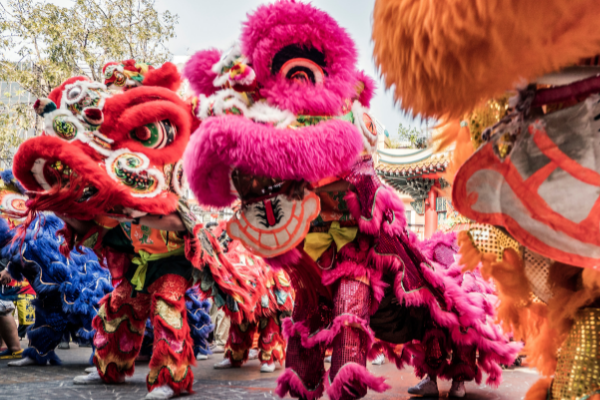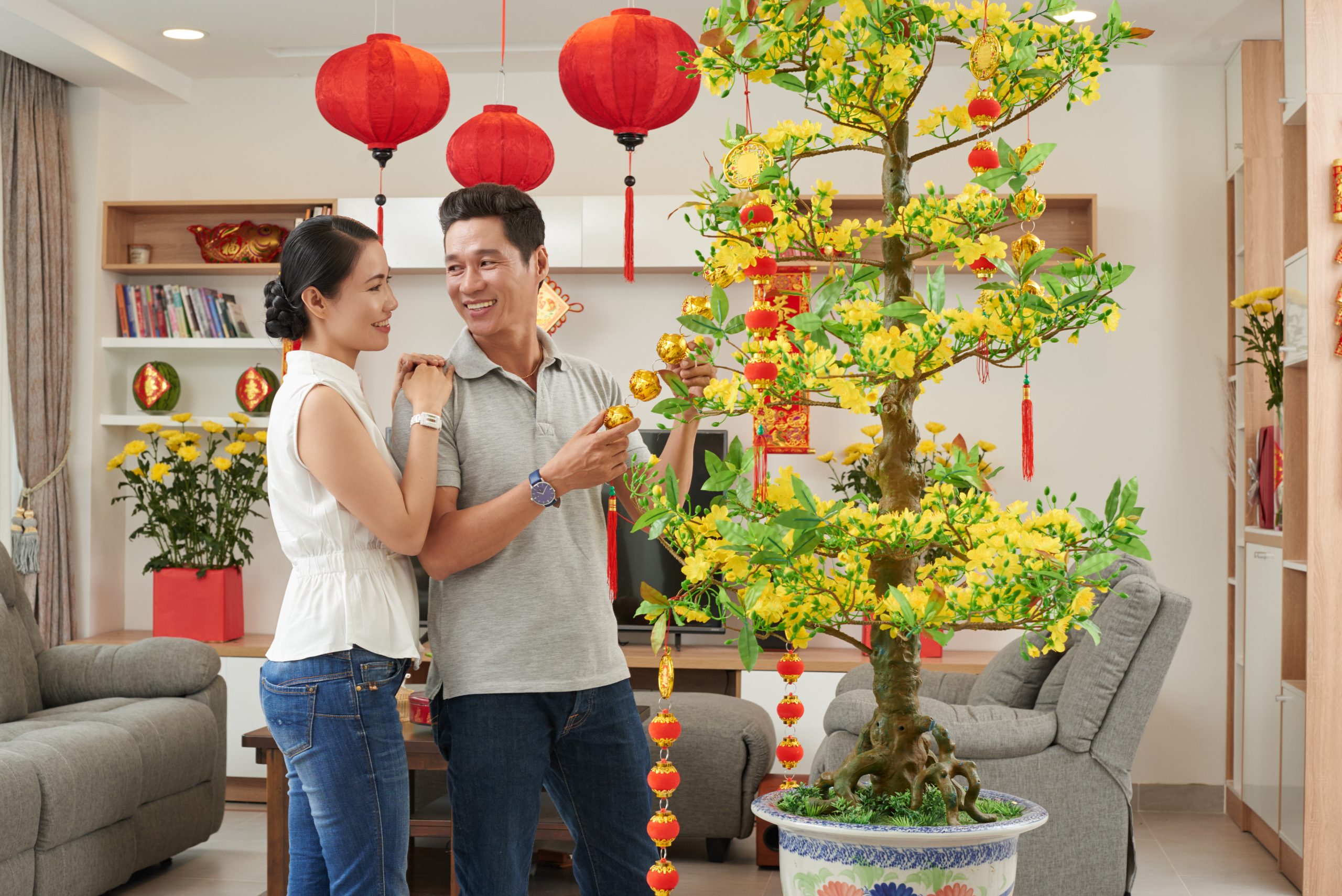Lunar New Year
DATE
Annually on the second new moon after the Winter Solstice
Dates vary, typically between January 21st and February 20th
HOLIDAY TYPE
Cultural and secular holiday with religious roots (Buddhism, Confucianism, Taoism & Chinese folk religion)
OBSERVED BY
Celebrated worldwide, particularly in Asian countries, (Brunei, Cambodia, Canada, China, India, Indonesia, Korea, Laos, Malaysia, Mauritas, Mongolia, Myanmar, Singapore, Taiwan, Thailand, Tibet, United States & Vietnam)

CUSTOMS & TRADITIONS
Lion dances with drums and dragon dances are exciting rituals of a Lunar New Year parade. Traditions include setting off firecrackers to frighten off evil spirits and thoroughly cleaning your home to sweep away any misfortune and to rid it of “huiqi,” all to attract good luck in the new year.
Red is the official color of Lunar New Year, which indicates happiness, passion, hope, joy, and good fortune. Gold is a significant color symbolizing wealth and prosperity. People wear red and children receive red paper envelopes filled with money. Windows, doors and gates are decorated with red lanterns, paper cut-outs, and “chunlian” couplets (banners with poems/lucky messages). The character, 福 (fú), is hung in a diamond shape upside down.
Fresh flowers and fruit fill homes and businesses since blossoming flowers and plants are believed to bring prosperity and represent new growth. Orchids are the most popular new year flower while bonsai and lucky bamboo plants are often given as gifts because they signify rebirth and renewal.
Another custom is the Chinese zodiac with 12 signs, each depicted by an animal (rat, ox, tiger, rabbit, dragon, snake, horse, goat, monkey, rooster, dog and pig). Together, they are known as 生肖 shēngxiào. Each year is represented by one of these beloved animals, which repeats every 12 years.
TRADITIONAL FOOD & DRINKS
Families gather for an annual reunion dinner. Fish, symbolizing prosperity and abundance, is served as the last course and is not meant to be eaten. Long noodles denoting longevity are consumed in the first five days of the New Year. Round dumplings representing the full moon and a sign of perfection are eaten on the 15th and final day of the New Year.
Other Traditional Food: Spring rolls, rice cakes, sweet rice balls, round and golden colored fruit.
Drinks: Wine is the typical drink, especially baijiu or Chinese white wine.



HOLIDAY HISTORY
Around the world, over 1.5 billion people celebrate Lunar New Year, also known as Chinese New Year, Spring Festival, Rongoli Bihu for the Indigenous Assamese, Seollal (설날) in Korea, Tsagaan Sar in Mongolia, Losar in Tibet, and Tết Nguyên Đán or Tết in Vietnam. In China, it is called Chunjie (春节) and it is the most important holiday for Chinese people globally. Even though these countries celebrate the beginning of the new year similarly, they each have their own unique holiday activities and traditions. Some festivities are three days and can continue for up to a week, while others last fifteen days until the first full moon and conclude with a Lantern Festival.
Lunar New Year has a history of over 4,000 years, although the exact beginning of this holiday is unclear. This ancient holiday honors household and heavenly deities, such as Kitchen God, Gate God, Joy God, Wealth God and Well God. Traditionally, it is a time to pray for good harvest and ancestors from long ago. Many travel great distances to be with family and loved ones. For some of the younger generation today, the holiday has evolved from a chance to spend time with family to an opportunity for relaxation.


